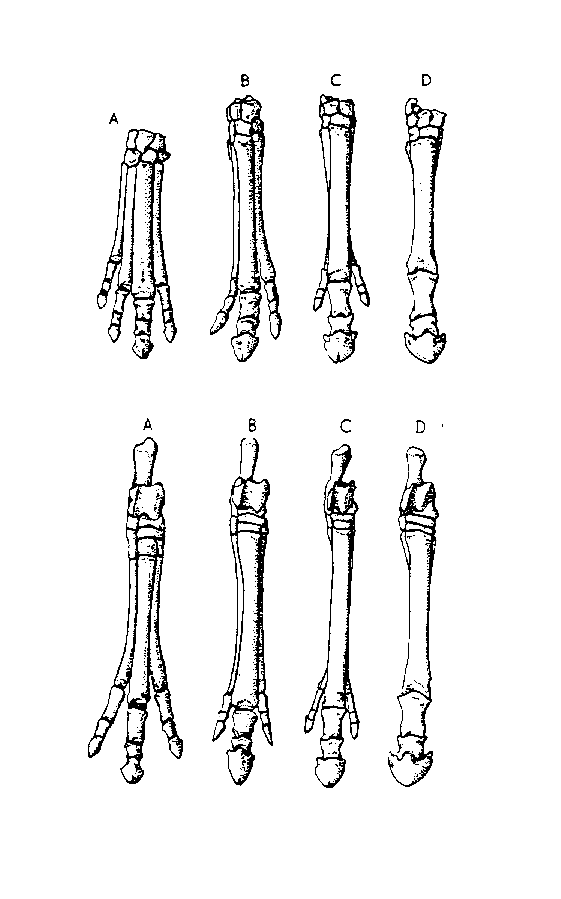You have made a very fanciful misinterpretation of a dialogue that happened in mainstream science starting about 130 years ago and ending with George Gaylord Simpson back in the 1940s. Horse evolution, like just about everything else, is a tree structure and not a straight-line progression. For all that, it is indeed a progression through time and lots of it.
Just for instance:

Eohippus/Hyracotherium, 50 million years ago.

Merychippus, 10 million years ago.
Just one tiny part of the picture is formed by the changes in the toe bones.

Figure 6. Stages in horse evolution showing the reduction in the number of toes and foot bones. Forefeet above, hind feet below. (A) Hyracotherium, a primitive early Eocene horse with four toes in front and three behind, (B) Miohippus, an Oligocene three-toed horse, (C) Merychippus, a late Miocene form with reduced lateral toes, and (D) Equus. (From Vertebrate Paleontology by Alfred Sherwood Romer published by The University of Chicago Press, copyright © 1945, 1966 by The University of Chicago. All rights reserved. This material may be used and shared with the fair-use provisions of US copyright law, and it may be archived and redistributed in electronic form, provided that this entire notice, including copyright information, is carried and provided that the University of Chicago Press is notified and no fee is charged for access. Archiving, redistribution, or republication of this text on other terms, in any medium, requires both the consent of the authors and the University of Chicago Press.)From Taxonomy, Transitional Forms, and the Fossil Record.